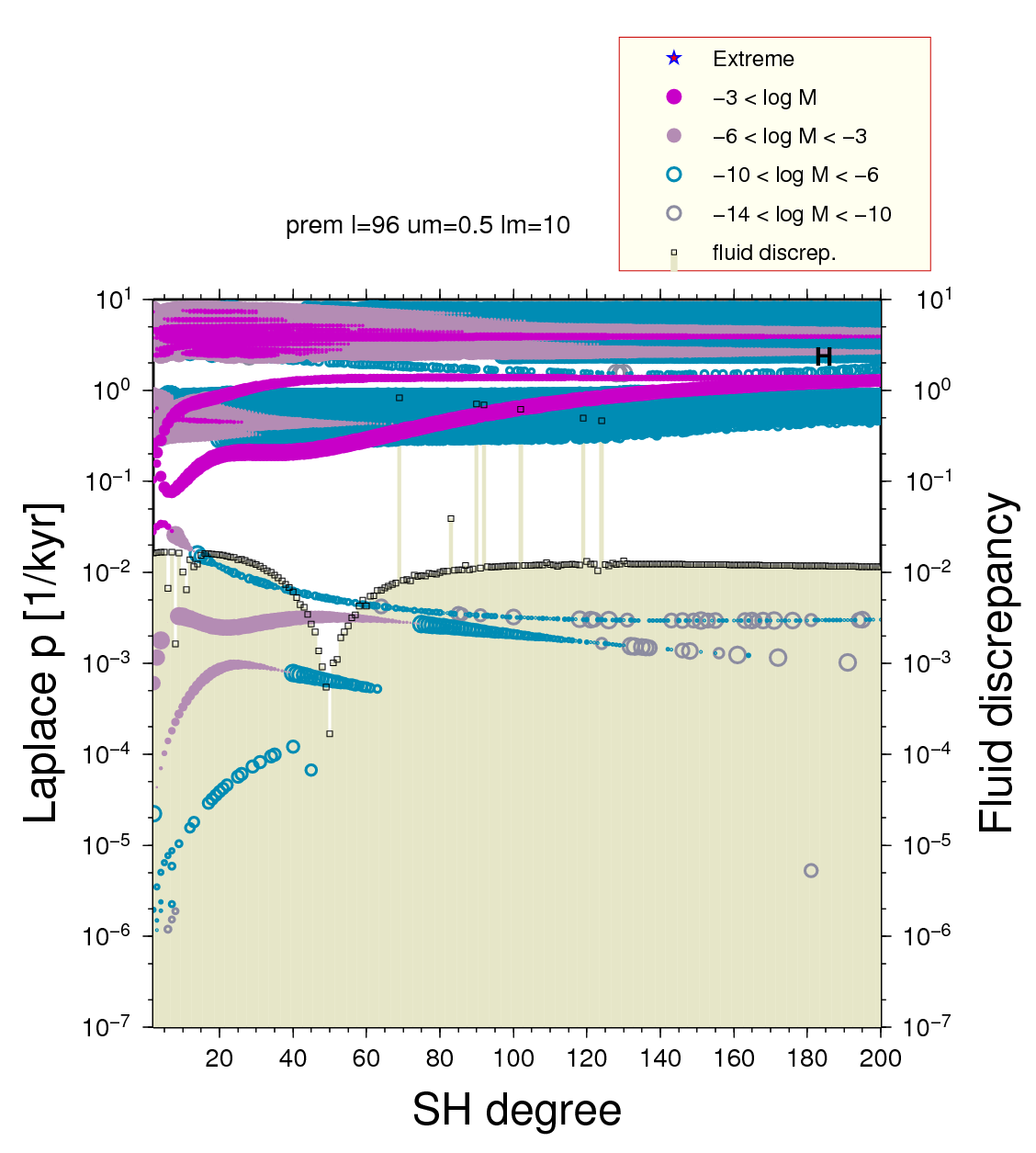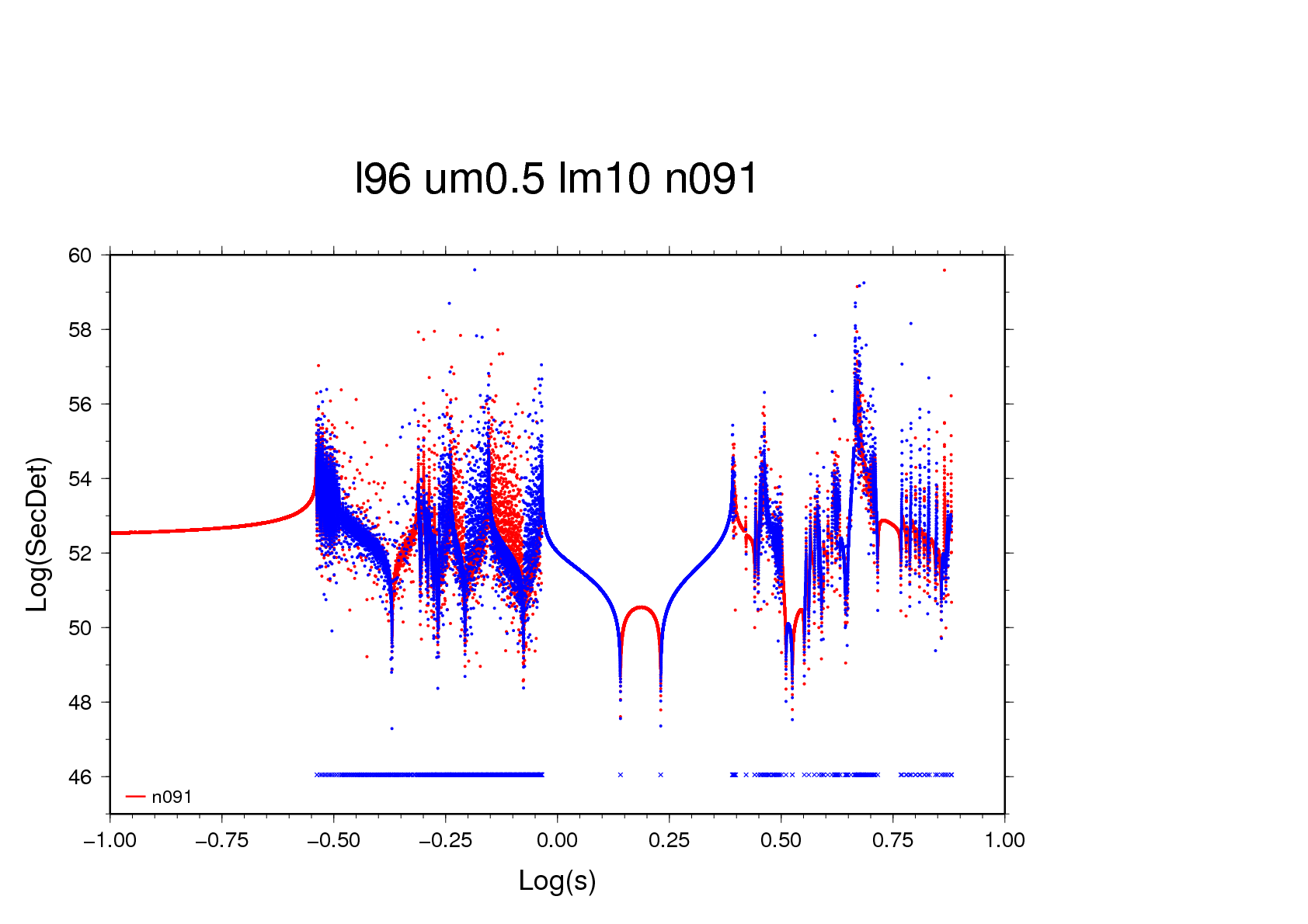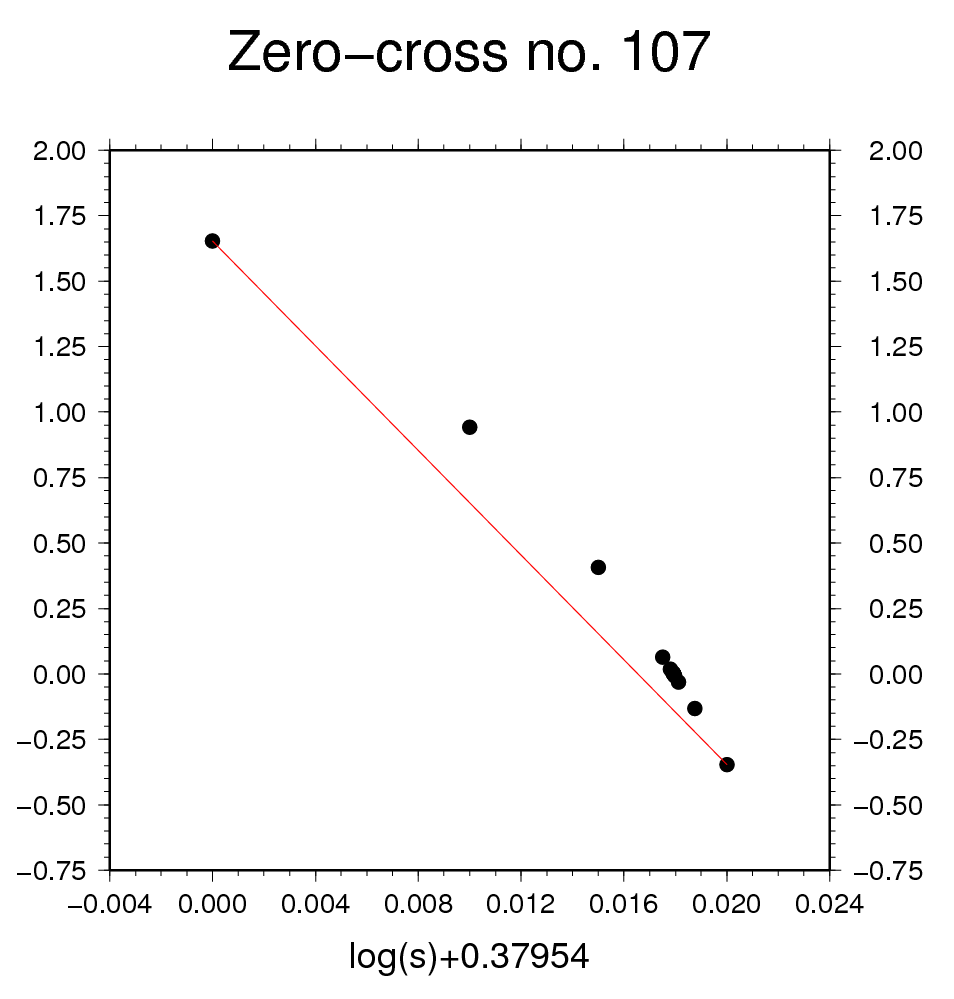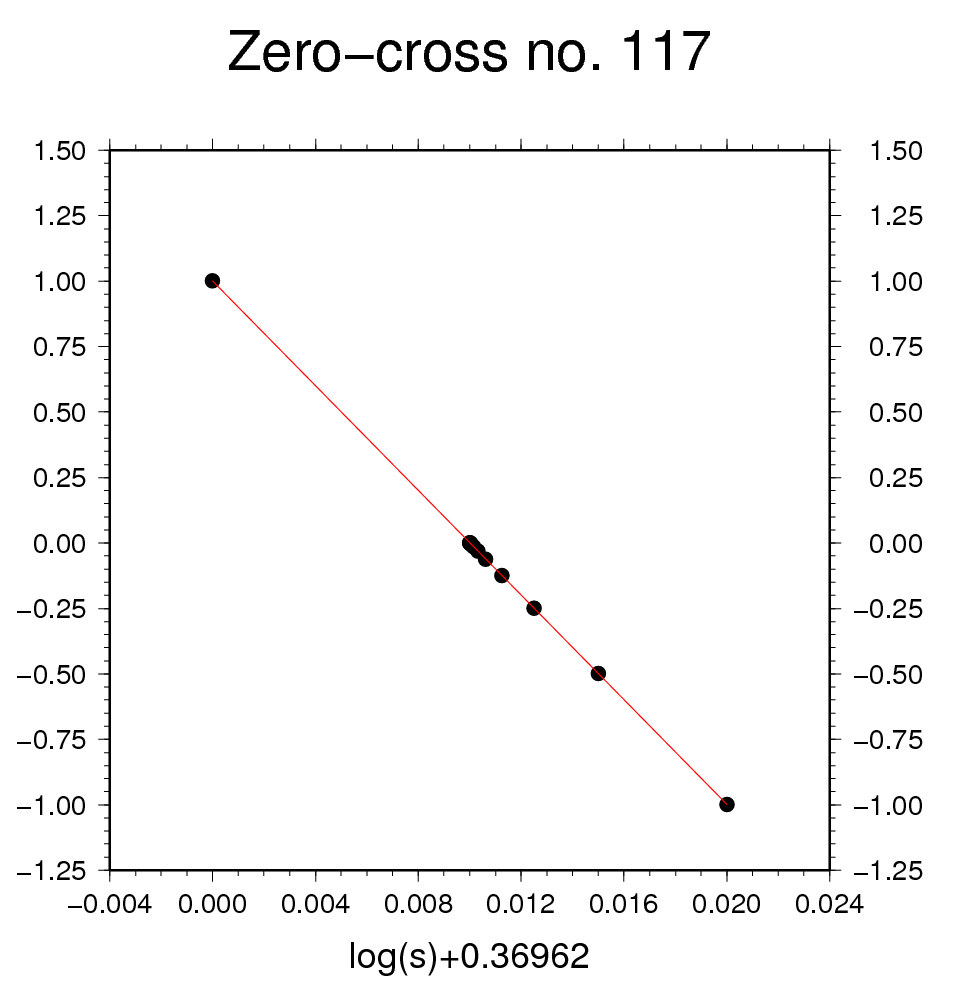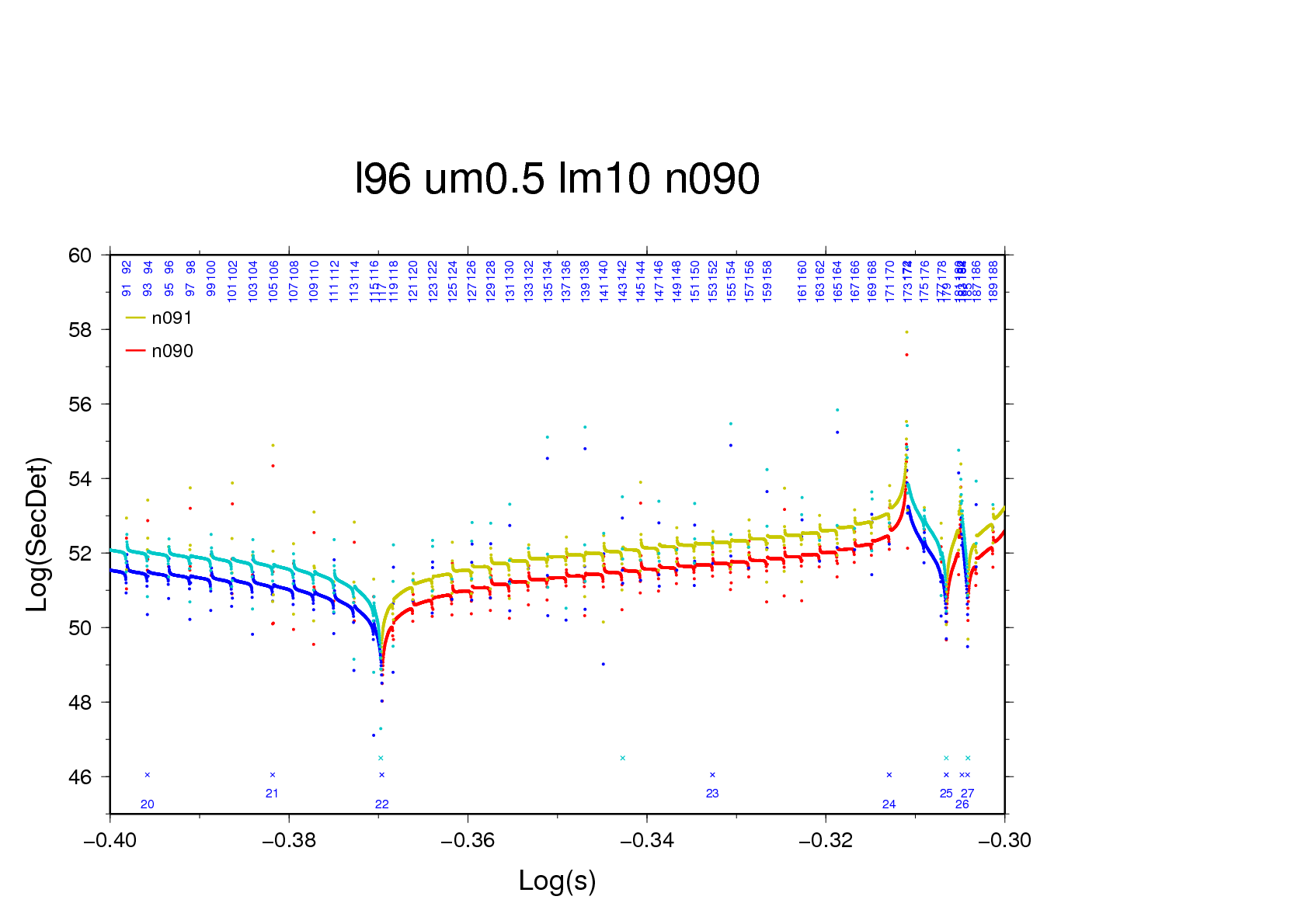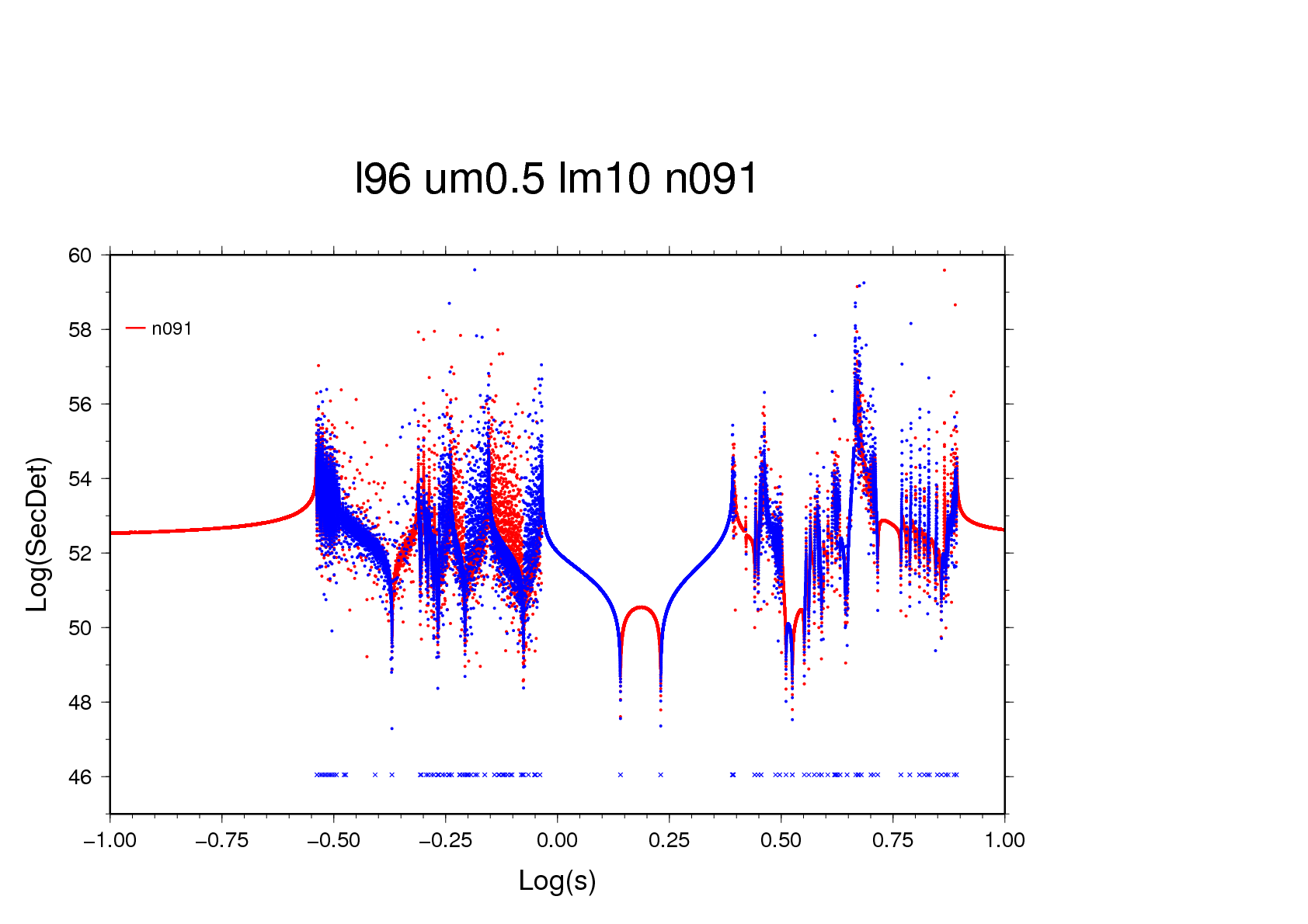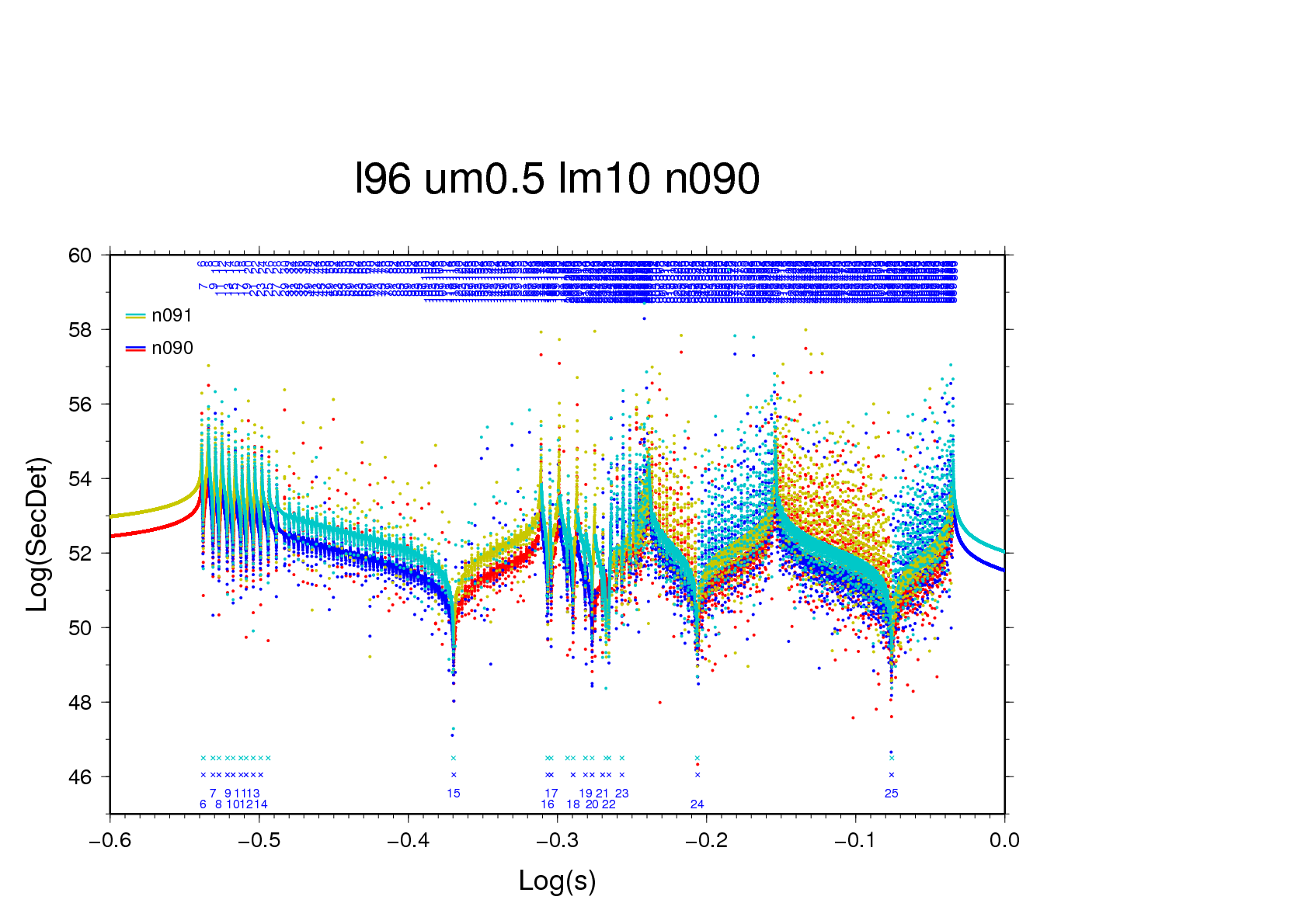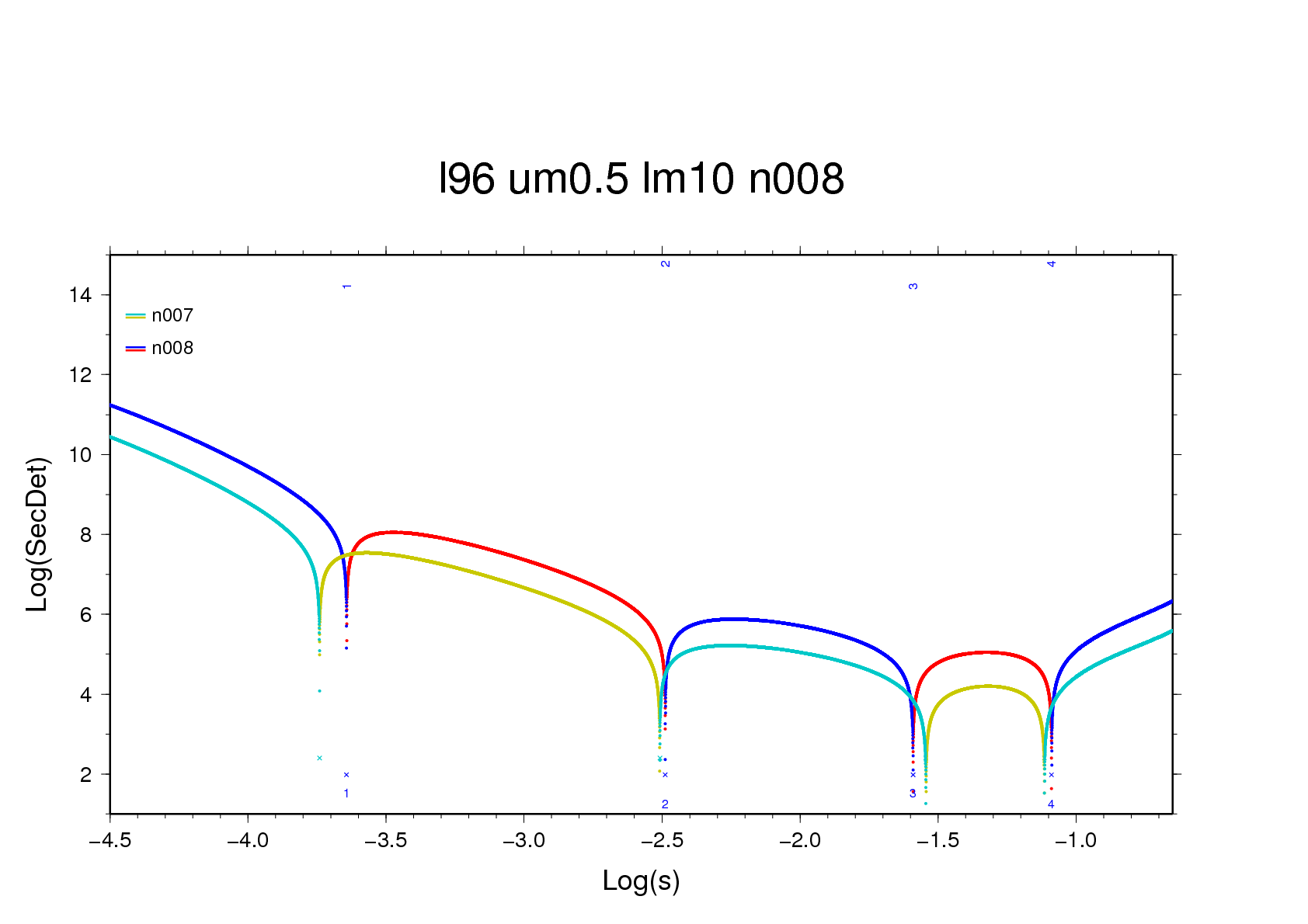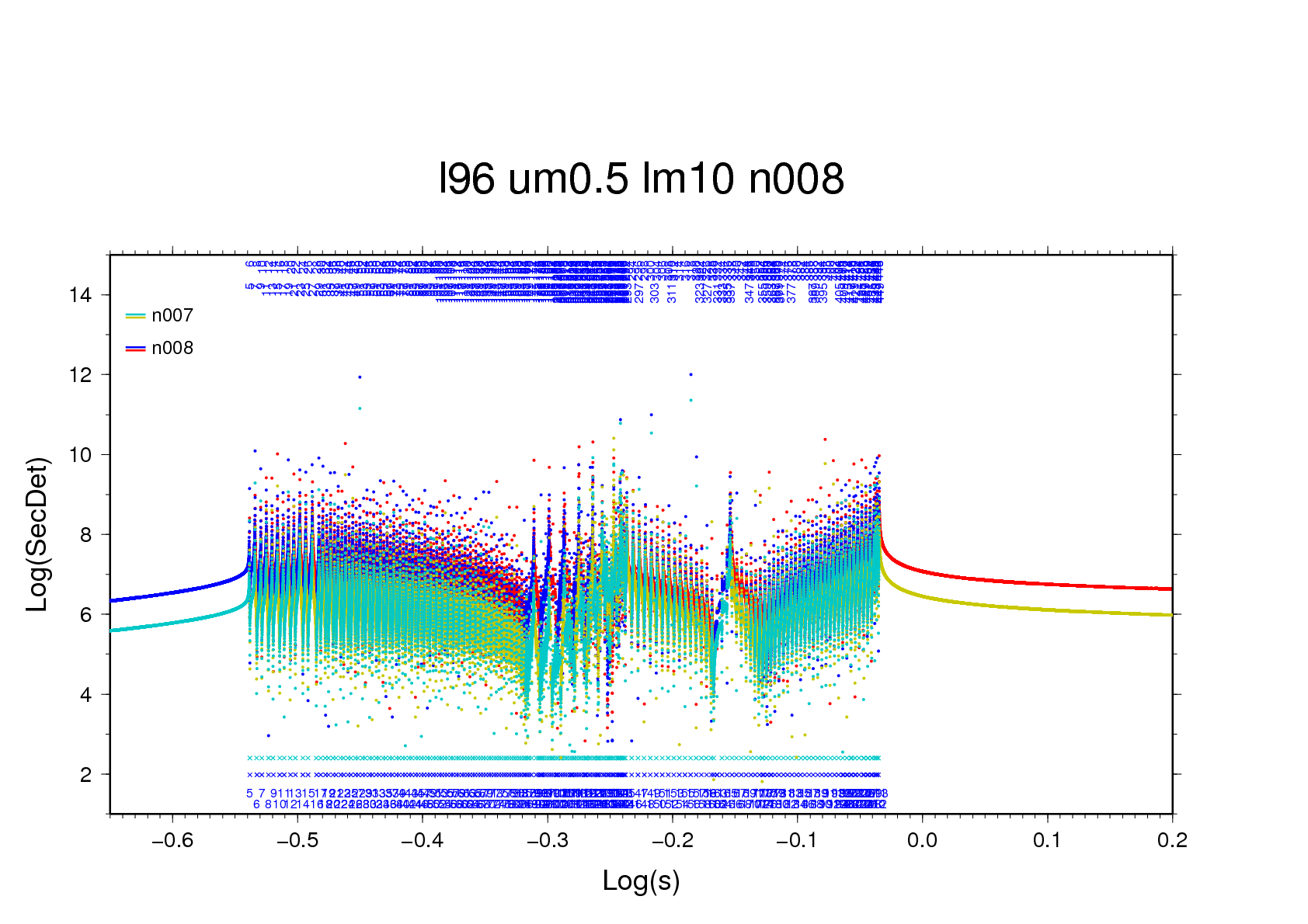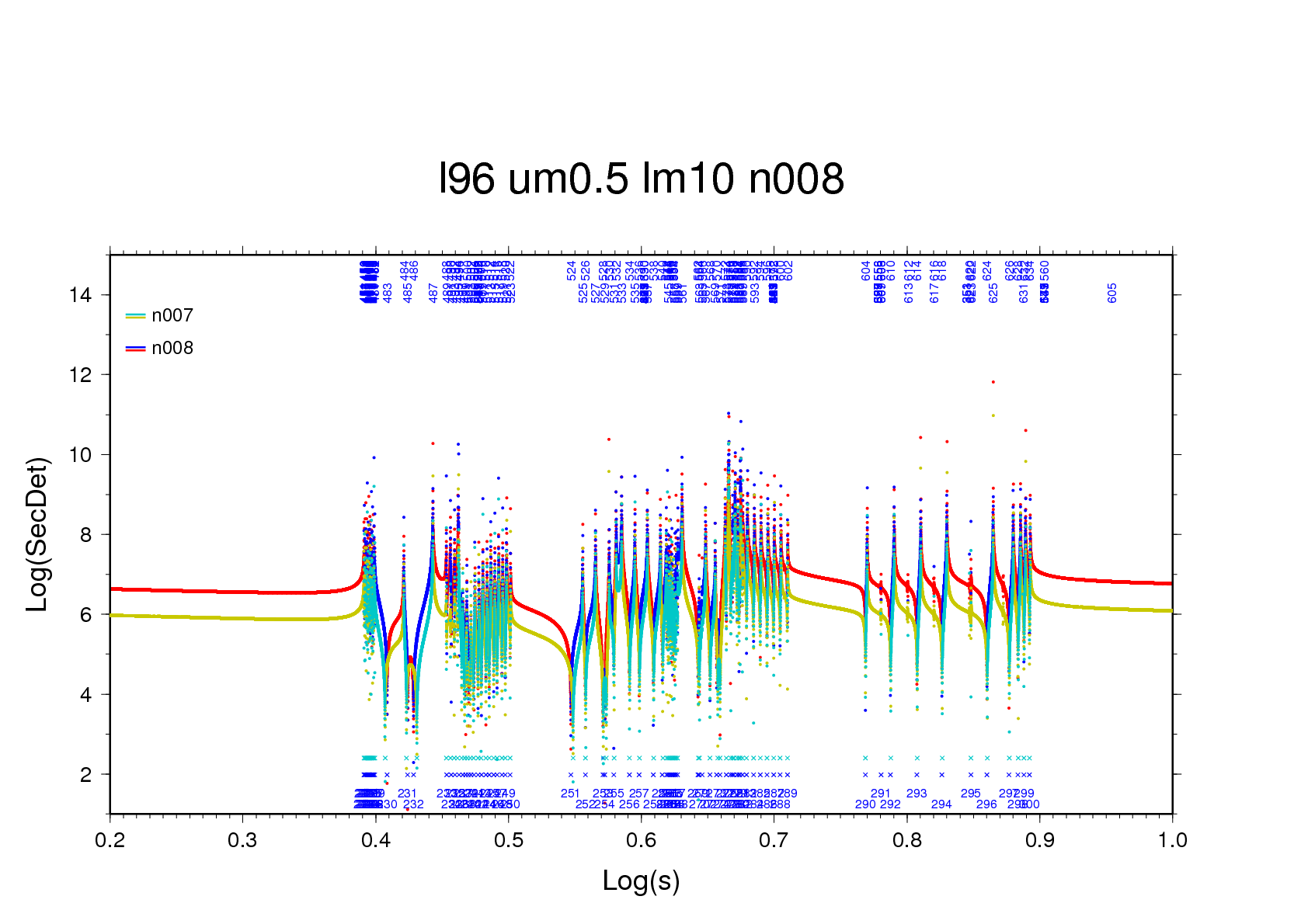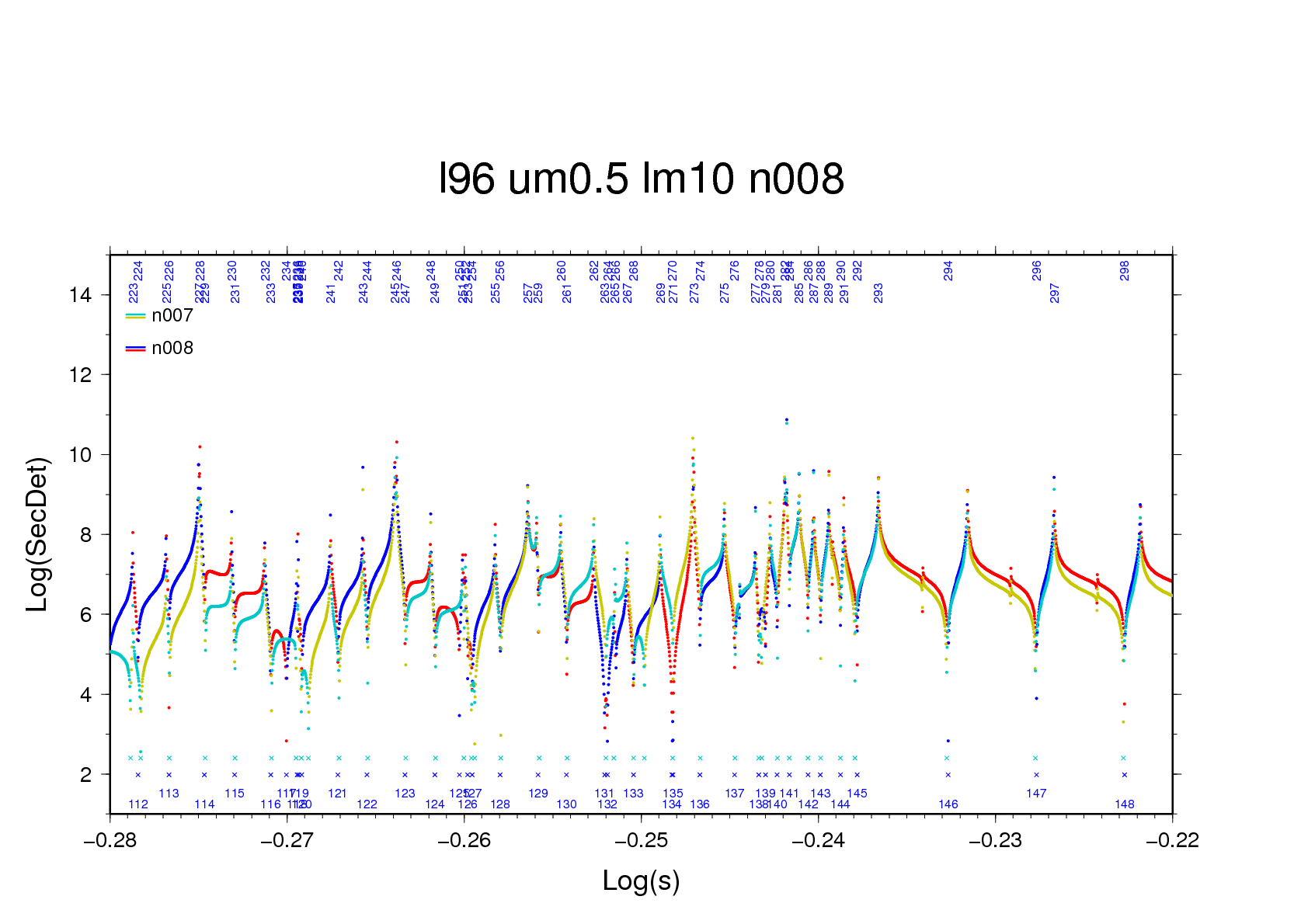§7 - Resistant bummers
This case (n = 69, s = 0.4303, log s
= -0.3662) can only be solved with a narrower base interval.
And a more tolerant slope convergence criterion. Two missed
roots located within close range cause a significant outlier
in the fluid-discrepancy test. The roots are important as
their relaxation times are 2,300 yr. At n=70
the world is in order again.
The slope series during the iteration is
Table 7a: Iteration of zero-crossing #120
-----------------------------------------------
k
log(s)
slope slope/slope12
-----------------------------------------------
1 -3.66192500e-01
-3.12772e-42 0.954691
2 -3.66193750e-01
-3.33959e-42 1.019361
3 -3.66193125e-01
-3.46286e-42 1.056987
4 -3.66192812e-01
-3.53379e-42 1.078638
5 -3.66192656e-01
-3.52338e-42 1.075460
6 -3.66192734e-01
-3.51812e-42 1.073855
7 -3.66192773e-01
-3.49597e-42 1.067094
8 -3.66192754e-01
-3.55244e-42 1.084330
9 -3.66192744e-01
-3.37290e-42 1.029528
10 -3.66192749e-01 -3.28091e-42
1.001450
11 -3.66192751e-01 -4.22279e-42
1.288945
12 -3.66192753e-01 -3.27616e-42
1.000000
-----------------------------------------------
The eleventh value might suffer from imprecision.
It's even worse at zero-crossing #121:
Table 7a: Iteration of zero-crossing
#121
-----------------------------------------------
k
log(s)
slope slope/slope12
-----------------------------------------------
1 -3.66182500e-01
2.48226e-42 2.137116
2 -3.66181250e-01
2.15139e-42 1.852251
3 -3.66180625e-01
2.31567e-42 1.993689
4 -3.66180937e-01
2.41021e-42 2.075084
5 -3.66181094e-01
2.48145e-42 2.136418
6 -3.66181172e-01
2.44919e-42 2.108644
7 -3.66181211e-01
2.36189e-42 2.033483
8 -3.66181191e-01
2.44075e-42 2.101378
9 -3.66181182e-01
2.72824e-42 2.348894
10 -3.66181177e-01 2.61868e-42
2.254567
11 -3.66181179e-01 1.33728e-42
1.151339
12 -3.66181178e-01 1.16150e-42
1.000000
-----------------------------------------------
A special scan of the problem laden s-range
-0.368 -0.364
0.000005 1.d-10 SLC
500 12 5.0d0 4
determines the two roots and the associated Love number
strengths as follows:
n,m
|
69 2
s
| 0.43033557E+00
0.43034704E+00
h,l,k elastic| -0.27471472E+01
0.84046976E+00 0.00000000E+00
0.00000000E+00 -0.14401682E+01
h,l,k asympt.| -0.16485111E+02
0.75387823E+01 0.00000000E+00
0.00000000E+00 -0.13183694E+02
H | -0.12512432E-05
0.13269297E-07
L | 0.57020941E-06
-0.88461980E-08
K | -0.10003477E-05
0.13334738E-07
Note that the first root (s = 0.43033557, log s
= -0.366193) is important!
I would like to add this result to the mode file produced
with the standard instruction block.
A mode-file editor is badly needed!
NEWS: We have (though a rather simple) one now, 2013-07-08.
We
have another example (n=102).
|
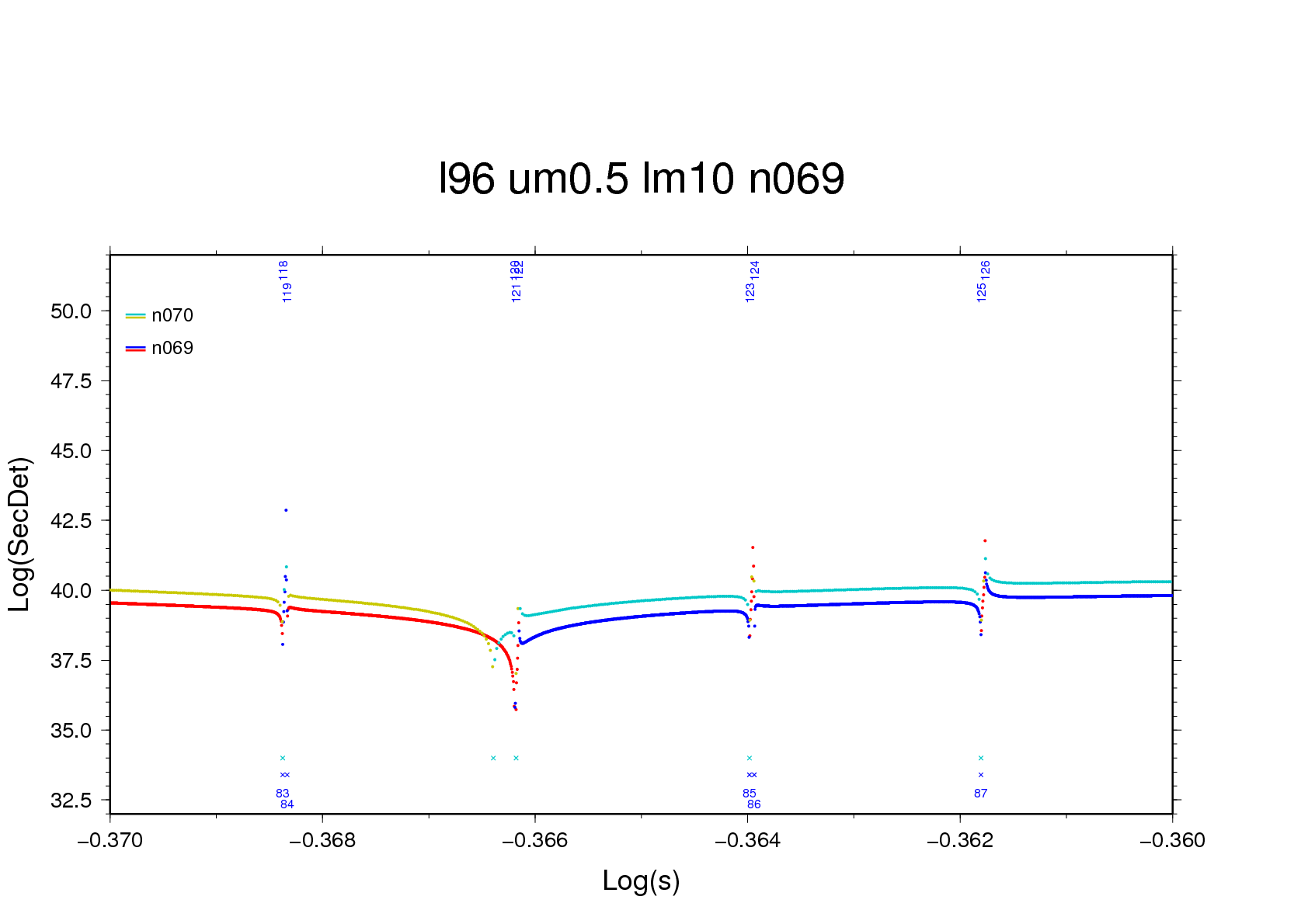
Figure 7b - using a basic scanning interval of 200,000 per
decade three zero-crossings, of which one is a pole, are
found near -0.3662 (n=69). With a fourfold greater interval
the three crossings locate themselves within a single
interval, and by mischance it's the pole that is iterated
upon.
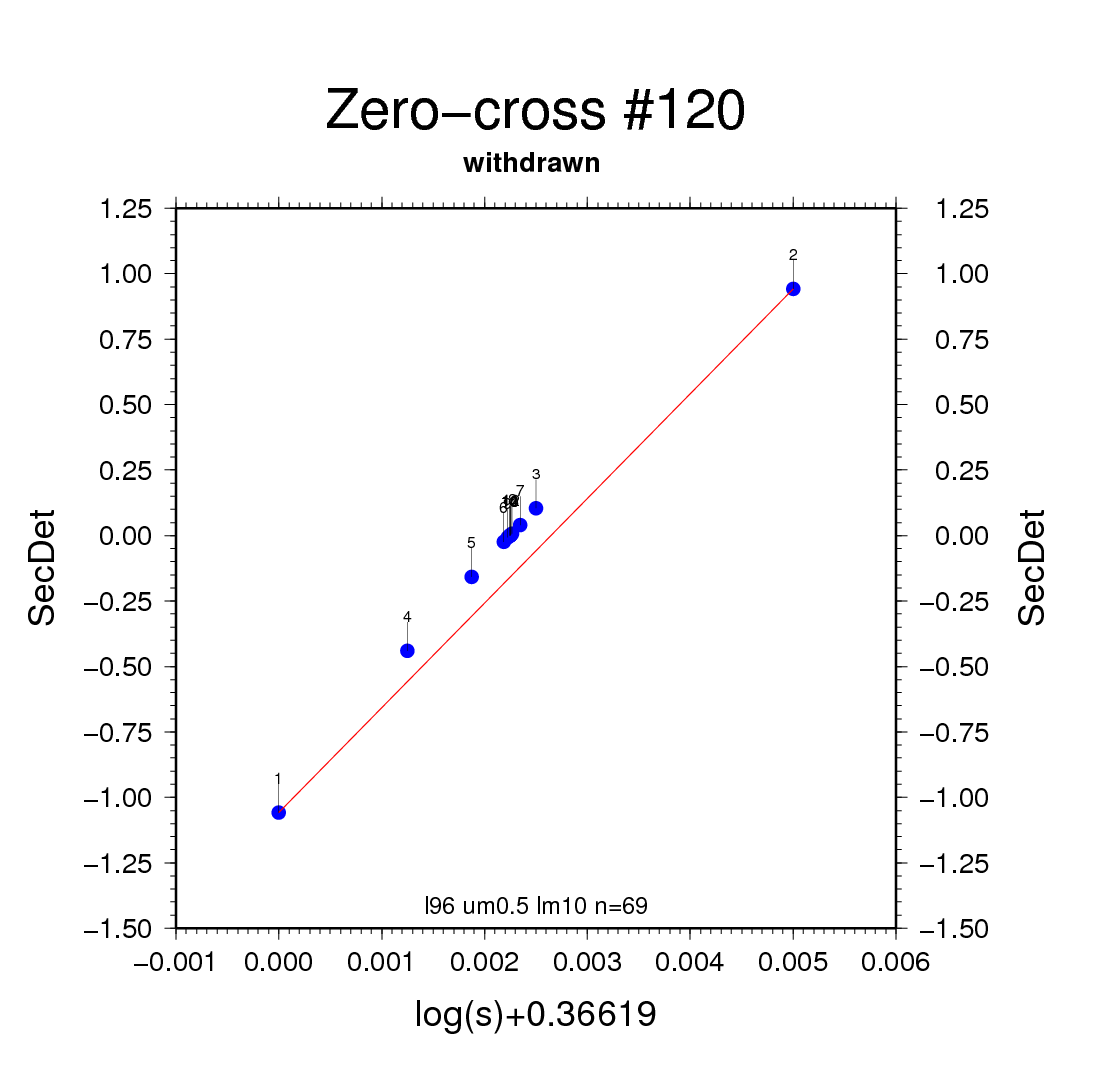 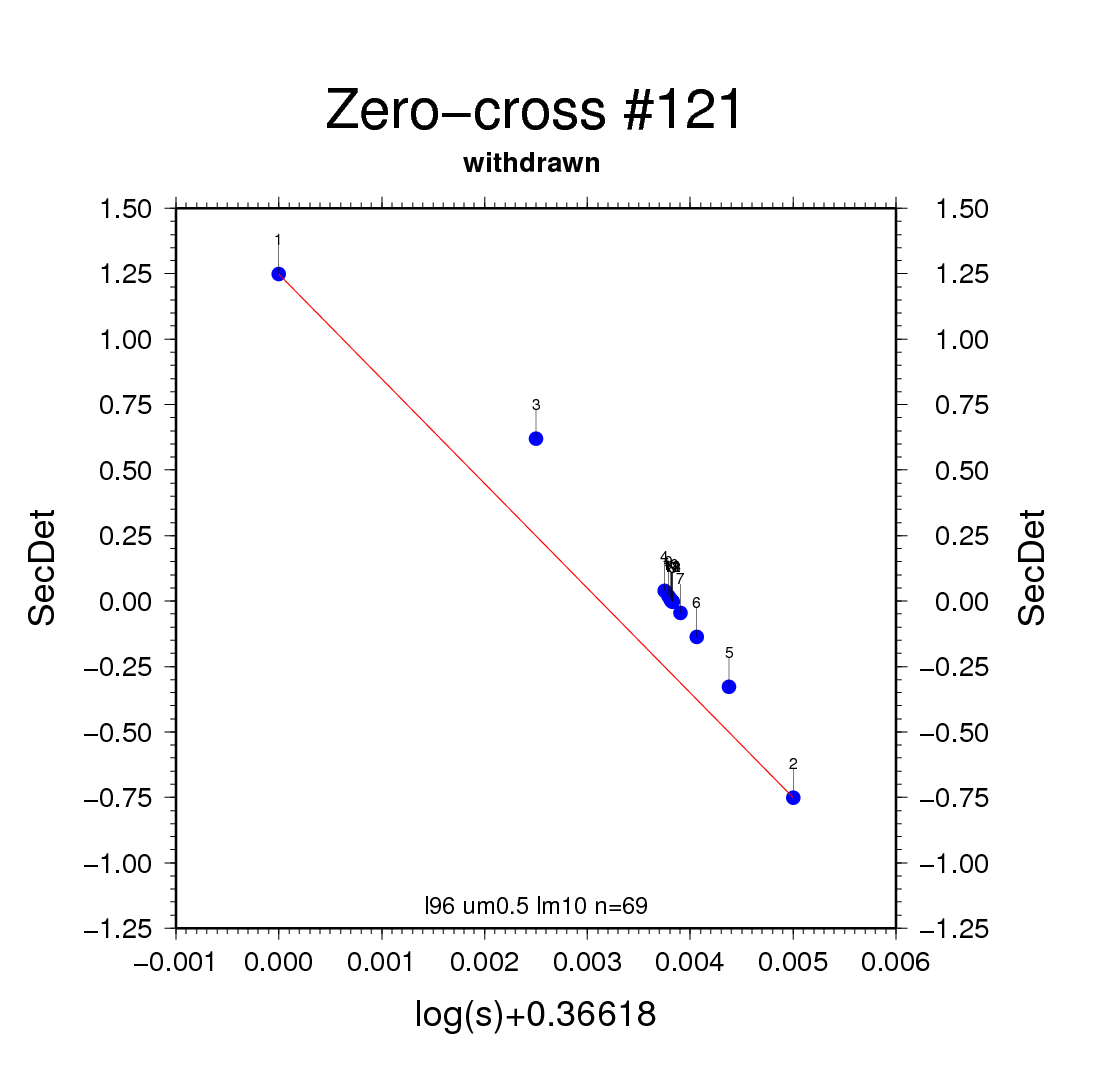
Figure 7b - even though the root is found, the series of
slope values is very bumpy.
|
